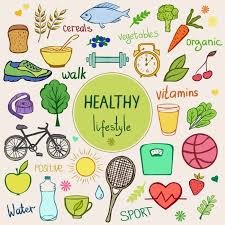Longevity and Meditation: Finding Peace within Yourself

Updated at: 2023-08-06 00:27:25 (2 years ago by Melkisedeck Leon Shine)
Title: Longevity and Meditation: Finding Peace within Yourself
Introduction: 🌟 In today's fast-paced world, finding inner peace and achieving longevity has become increasingly important. Many people are turning to meditation as a powerful tool to calm the mind, reduce stress, and promote overall well-being. As AckySHINE, a believer in the transformative power of meditation, I am excited to share with you the incredible benefits of incorporating meditation into your daily life. Let's explore how meditation can help you find peace within yourself and enhance your longevity.
-
Stress Reduction: 🧘♀️ Meditation has been proven to be highly effective in reducing stress levels. By practicing meditation techniques such as deep breathing and mindfulness, you can release tension, quiet your mind, and achieve a state of calm. This can ultimately lead to improved longevity by reducing the harmful effects of chronic stress on the body.
-
Improved Mental Clarity: 🌈 Meditation allows you to cultivate a clear and focused mind. Regular practice helps to declutter your thoughts, improve concentration, and enhance cognitive function. As AckySHINE, I recommend integrating meditation into your routine to experience mental clarity and remain sharp as you age.
-
Emotional Well-being: 😊 By practicing meditation, you can develop a heightened sense of self-awareness and emotional intelligence. This can lead to a greater ability to regulate emotions, manage stress, and cultivate positive relationships. Meditation empowers you to find inner peace and happiness, promoting longevity through emotional well-being.
-
Enhanced Physical Health: 🏋️♀️ Studies have shown that incorporating meditation into your lifestyle can have a positive impact on physical health. It can reduce blood pressure, strengthen the immune system, and improve sleep quality. These physical benefits contribute to overall longevity and well-being.
-
Slowing Down the Aging Process: ⌛️ As we age, our bodies naturally undergo various changes. However, meditation has been found to slow down the aging process at a cellular level. Regular meditation practice can increase the length of telomeres, which are protective caps on the ends of our chromosomes associated with longevity.
-
Boosting Resilience: 💪 Life can be challenging, and building resilience is crucial for maintaining longevity. Meditation helps you develop a resilient mindset by fostering inner strength, adaptability, and the ability to bounce back from adversity. Embracing meditation as a regular practice can help you navigate life's challenges with grace and strength.
-
Cultivating Gratitude: 🙏 By incorporating gratitude meditation into your routine, you can cultivate a sense of appreciation for the present moment and the blessings in your life. Practicing gratitude has been linked to increased happiness, reduced stress, and improved overall well-being. As AckySHINE, I recommend keeping a gratitude journal to record moments of joy, kindness, and gratitude.
-
Creating a Sense of Purpose: 🌟 Meditation allows you to connect with your inner self and gain clarity on your purpose in life. By setting intentions and aligning your actions with your values, you can create a sense of purpose that brings fulfillment and longevity. Take time during your meditation practice to reflect on your goals and aspirations.
-
Strengthening Relationships: 🤝 Meditation fosters empathy, compassion, and kindness, which are essential qualities for nurturing healthy and meaningful relationships. When you cultivate a sense of peace and harmony within yourself through meditation, you radiate that positivity to those around you, creating stronger connections and enhancing longevity.
-
Improving Sleep Quality: 🌙 Lack of quality sleep can have detrimental effects on both physical and mental well-being. Meditation promotes relaxation and can help combat insomnia and improve sleep quality. By integrating meditation into your bedtime routine, you can achieve a more restful and rejuvenating sleep, contributing to overall longevity.
-
Increasing Self-Confidence: 💪 Through regular meditation practice, you can develop a deep sense of self-acceptance, self-love, and self-confidence. As you cultivate a positive relationship with yourself, your self-esteem naturally grows, empowering you to pursue your goals and dreams. Meditation is a powerful tool for enhancing self-confidence and longevity.
-
Enhancing Creativity: 🎨 Meditation stimulates the creative centers of the brain, allowing ideas to flow more freely and fostering innovative thinking. By quieting the mind through meditation, you create the space for new insights and creative solutions to emerge. Embrace meditation as a way to tap into your innate creativity and enhance longevity.
-
Promoting Mind-Body Connection: 🧘♂️ Meditation strengthens the mind-body connection, allowing you to become more attuned to the needs of your body. As you deepen your awareness through meditation, you can better understand and respond to the signals your body sends, promoting optimal health and longevity.
-
Finding Balance in Life: ⚖️ In today's fast-paced world, finding balance is key to maintaining longevity. Meditation provides a valuable opportunity to slow down, reflect, and rebalance. By incorporating regular meditation practice into your daily routine, you can find harmony between work, relationships, self-care, and personal growth.
-
Taking the First Step: 🌟 Now that you understand the incredible benefits of meditation for longevity and finding peace within yourself, it's time to take the first step. Start small by dedicating just a few minutes each day to meditation. Set aside a quiet space, adopt a comfortable posture, and focus on your breath. Allow thoughts to come and go without judgment. As AckySHINE, I encourage you to explore different meditation techniques and find what resonates with you personally.
Conclusion: 🌈 Meditation is a powerful practice that can bring peace, joy, and longevity into your life. By dedicating time to quieting your mind, cultivating self-awareness, and nourishing your soul, you have the potential to unlock your inner potential and find lasting peace within yourself. As AckySHINE, I invite you to embark on this transformative journey and experience the incredible benefits of meditation for yourself. What are your thoughts on meditation? Have you tried it before? Share your experiences and opinions in the comments below!



